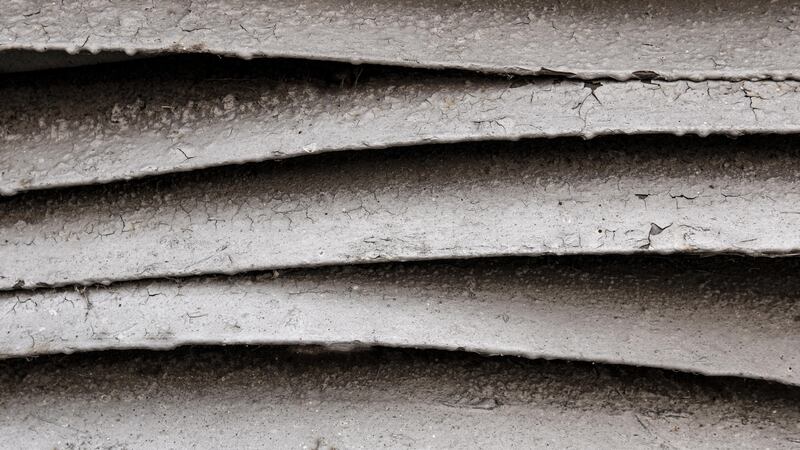Many homeowners throughout the United States worry about asbestos, and for good reason. Asbestos has been linked to numerous health concerns in humans who spend time near it over time. Most of the general population understands that being around asbestos is undesirable, but some people wonder if it is essential to remove asbestos from their homes entirely. A common question we encounter among HVAC owners is: must I abate asbestos if I discover it on the ducts in my HVAC system?
 Public facilities are required by law to remove asbestos, and employers may run the risk of being sued if they allow asbestos to exist in their workplaces. However, individual homeowners may not be legally required to abate asbestos on their property. Still, the question of whether you must abate asbestos or not may not be the essential one to ask. Instead, try asking yourself this: why wouldn’t you abate asbestos if you find it in your home? While reduction may not be required by law of every single person who discovers asbestos in their home, it is almost always something you should do if you find yourself living in a house with asbestos present. The following paragraphs will tell you why abatement is vital, what symptoms may be caused by prolonged exposure to asbestos, and how to deal with asbestos if you do find it in the ductwork.
Public facilities are required by law to remove asbestos, and employers may run the risk of being sued if they allow asbestos to exist in their workplaces. However, individual homeowners may not be legally required to abate asbestos on their property. Still, the question of whether you must abate asbestos or not may not be the essential one to ask. Instead, try asking yourself this: why wouldn’t you abate asbestos if you find it in your home? While reduction may not be required by law of every single person who discovers asbestos in their home, it is almost always something you should do if you find yourself living in a house with asbestos present. The following paragraphs will tell you why abatement is vital, what symptoms may be caused by prolonged exposure to asbestos, and how to deal with asbestos if you do find it in the ductwork.
Why You Should Always Abate Asbestos if You Find it in Your House
It is true that asbestos may not harm you if you never come into contact with it in your home. However, it is also true that if you find asbestos in your home, it is probably because you came into contact with it. If the place you discovered asbestos on the ducts is relatively accessible, you should seriously consider abating it. Removing the asbestos will guarantee that no one else in your home can encounter it and be affected.
Of course, asbestos does not usually cause harmful effects in humans immediately. It is only after spending considerable time near asbestos and breathing in its fibers that one begins to suffer from health problems. However, the longer you put off asbestos removal, the more time you may allow for yourself and your family to be exposed. It is recommended that you contact your HVAC service company as soon as you notice asbestos on the ductwork and discuss how best to decrease it with them.
Health Risks of Asbestos
Asbestos was used in the construction of many homes throughout the middle decades of the 20th century, primarily because it was a cost-effective form of insulation that also proved to be highly fire-retardant. However, asbestos also has the potential to release tiny fibers when it is disturbed, which can be breathed in by humans and lodge inside their lungs without their knowledge. Over time, these fibers can collect in large amounts and cause severe health problems. The US Department of Health and Human Services has classified asbestos as a carcinogenic substance—which means that it has been found to cause cancer in humans. In addition to several forms of cancer, asbestos exposure can also cause asbestosis, which can cause respiratory upset and permanent damage to the lungs. Because it takes years for these complications to develop, the effects of asbestos were not widely known until it was already used in the construction of numerous homes.
How to Deal with Asbestos on AC Ducts
If you have recently had an HVAC installed by a licensed professional, there should be almost no risk of asbestos on its ducts. However, if you have purchased an older home with existing HVAC infrastructure that dates back over a decade or two, it is worth investigating the ducts for asbestos and calling your service technician if you find any. You and your technician will be able to discuss your next moves. There are two ways to abate asbestos: repairing it or removing it entirely.
Repairing asbestos is either done by sealing it together so that its fibers will not be released into the air of your home, or covering it up so that the fibers will be contained within an area where they will pose no danger to humans. Removing asbestos is a more costly procedure, but one that will take the asbestos out of your property altogether. Critically, neither process should be undertaken by anyone but a licensed professional. Licensed professionals will know how to safely deal with the asbestos and dispose of it in an environmentally responsible way if you elect to have it removed from your home.
FAQ Section: Asbestos in HVAC Systems
1. What Should I Do If I Find Asbestos on My HVAC Ducts?
If you discover asbestos on your HVAC ducts, it’s crucial to take immediate action. The safest approach is to contact a licensed asbestos abatement professional. They can assess the situation and recommend either repairing the asbestos by sealing it or removing it entirely. Attempting to handle asbestos without proper training and equipment can lead to harmful exposure to asbestos fibers, which are known to cause severe health issues.
2. Is It Necessary to Remove Asbestos from My Home?
While homeowners are not always legally required to remove asbestos, it is highly recommended. Prolonged exposure to asbestos fibers can lead to severe health problems, including lung cancer and asbestosis. Removing asbestos from your home can protect your family from these risks and provide peace of mind. Even if the asbestos is not currently causing harm, its presence increases the potential for future exposure.
3. What Are the Health Risks Associated with Asbestos Exposure?
Asbestos exposure poses significant health risks, including various forms of cancer such as mesothelioma and lung cancer, as well as asbestosis, a chronic lung disease. Asbestos fibers, when inhaled, can lodge in the lungs and remain there for years, leading to severe respiratory problems and other complications. The U.S. Department of Health and Human Services has classified asbestos as a carcinogenic substance, underscoring the importance of avoiding exposure.
4. How Do Professionals Abate Asbestos in HVAC Systems?
Professionals typically abate asbestos by either repairing or removing it. Repairing involves sealing the asbestos to prevent fibers from being released into the air or covering it to contain the fibers. Removal is a more thorough process that involves completely eliminating the asbestos from the property. Both methods should only be performed by certified professionals to ensure safety and proper disposal of the hazardous material.
5. Why Was Asbestos Used in HVAC Ducts, and Is It Still Common?
Asbestos was commonly used in HVAC systems and other construction materials throughout the mid-20th century due to its fire-resistant properties and cost-effectiveness as insulation. However, once its health risks became widely known, the use of asbestos was largely discontinued. In modern HVAC systems, asbestos is rarely, if ever, used. If your home was built before the 1980s, it’s advisable to have your ducts inspected for asbestos.
6. What Should I Do If I Suspect Asbestos in an Older Home’s HVAC System?
If you suspect asbestos in the HVAC system of an older home, do not attempt to inspect or disturb it yourself. Contact a licensed asbestos professional to conduct a thorough inspection. They can determine whether asbestos is present and advise you on the safest course of action, whether it be repair or removal.
7. Is Repairing Asbestos as Effective as Removing It?
Repairing asbestos can be effective in preventing asbestos fibers from being released into your home’s air, especially if the asbestos is in good condition and not easily disturbed. However, removal is generally considered the safer long-term solution, as it eliminates the material entirely. The best choice depends on the specific situation and should be determined by a professional.
8. Can Asbestos in HVAC Systems Cause Immediate Health Problems?
Asbestos-related health issues typically develop after long-term exposure, rather than from immediate contact. However, even brief exposure can be dangerous, as asbestos fibers can accumulate in the lungs over time. It’s important to address asbestos issues promptly to minimize any potential health risks.
9. Are There Legal Requirements for Asbestos Abatement in Residential Properties?
In residential properties, homeowners are not always legally required to remove asbestos, but public facilities and workplaces must adhere to strict regulations regarding asbestos abatement. However, given the health risks associated with asbestos, it’s advisable to have it removed from your home, even if not legally mandated.
10. How Can I Ensure My Home Is Safe After Asbestos Removal?
After asbestos removal, it’s crucial to have the area tested by a certified professional to ensure that all asbestos fibers have been effectively eliminated. Regular inspections and maintenance of your HVAC system can also help prevent any future issues. Always hire reputable contractors for asbestos removal to ensure the job is done safely and thoroughly.
Abate Asbestos and Earn Peace of Mind
You deserve to live in a home that is not at risk from asbestos. Remember the dangers it can cause and always abate asbestos if you notice it on your HVAC ducts, or anywhere else in your house.
Check with us here at Valley Comfort Heating and Air, our customers love our attention to detail and our friendly, affordable service. (707) 539-4533



